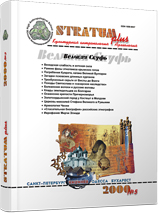Хазаро-русско-византийские отношения в середине Х в. и Крымская Хазария
Chazarian-Russian-Byzantine Relation in the Second Half of X c. and Crimean Khazaria
Author(s): Vadim V. MaikoSubject(s): History, Archaeology, Middle Ages, 6th to 12th Centuries
Published by: Издательский дом Stratum, Университет «Высшая антропологическая школа»
Summary/Abstract: The middle of X c. in Crimea saw appearance of a new material culture with no genetic basis in previous Old Bolgarian antiquities of the peninsula. Most of the settlements of Crimean variant of Saltovo-Majaki culture perishes or is deserted; instead, material finds, new for Tavtica, are fixed in stratigrafical sections of the sites. At the same time, these new cultures have a number of features inherent to early medieval Turk cultures of East Europe and Northern Caucasus. Its last occurrence on the peninsula is connected with migration of the North Caucasus Turks to Crimea after the campaign of 941 under leadership of Pesach. It is described in Cambridge Anonim. This culture of the second half of X — begining of the XI c. appears to be an archaeological equivalent of Crimean Khazaria of the second half of X c. Karl von der Lohe. The Cemetery Skalistoe in Crimea and Early Phases in the Ethnic Genesis of Crimean Goths (Late IV – Early VI cc.) The article analyses finds on the site of cemetery in Skalistoe belonging to the epoch of the Great Migrations. The site is situated in Crimea, 20 km south-west of Simferopol. Owing to its continuous existence from late IV to early VIII c., as well as to the well expressed grouping of burials, this cemetery offers a unique possibility to reconstruct structural changes in the ethnic composition of Crimean population. The author considers its geographical situation and available records, the state of the matters in building Crimean chronology for the time of the Great Migrations and early Middle Ages, researches horizontal stratigraphy of the cemetery, distinguishes 4 phases of its development and provides their ethnic interpretation. The researcher makes a conclusion that the foundation of the cemetery in Skalistoe is due to two different ethnics – Sarmatians and Goths. Its further development, however, shows the process of unification of these two peoples, which is manifested in formation of a unified culture, both material and spiritual, including religious beliefs.
Journal: Stratum plus. Археология и культурная антропология
- Issue Year: 2000
- Issue No: 5
- Page Range: 236-261
- Page Count: 26
- Language: Russian
- Content File-PDF

